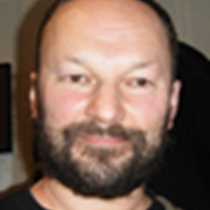Wellington
In Wellington they have an expression, “You can’t beat Wellington on a good day.” This reflects the fact that Wellington is notorious for wind, rain and chilly weather even in the summer. So on calm, hot days everyone is out enjoying themselves and appreciating the gifts of the weather gods. The Oceanic Discoverer arrived on just such a ‘good day.’ Tawhirimatea, the Maori god of winds and storms, was clearly taking a vacation and the ‘world’s coolest little capital’ turned on a glorious summer’s day for us.
Wellington is the political capital of New Zealand and a major cultural centre. With a population of around 200,000 people it is nation’s third largest city. The artistic world thrives in Wellington, a city known for being the major site of New Zealand’s film industry. Here Peter Jackson (now Sir Peter), Fran Walsh and the special effects wizards at Weta Workshop worked on Lord of the Rings and the Hobbit.
The Linblad expeditioneers began their day with a visit to the beautiful nineteenth century church now known as Old Saint Paul’s. This church, which is now non-denominational, began life in 1866 as the Anglican (episcopalian) cathedral. Designed by architect and clergyman Frederick Thatcher, it was built as a cathedral in the Gothic revival style, but constructed entirely from New Zealand native timbers. For many years it was the place of worship for the notable episcopalian families of Wellington and the plaques and stained glass windows reflect this. Old St Pauls also has an important American connection. In the years from 1942-44 thousands of US servicemen were stationed in Wellington and other parts of New Zealand before heading off to fight in the Pacific. St Pauls was the favored place of worship for many of these soldiers, sailors and marines and was the place where many friendships were formed with the local people. The ‘Yanks’ were especially popular with the young women of Wellington (and consequently not so popular with some of the young Kiwi men). The American connection is indicated by the colours of the US Marines that hang in St Pauls.
Old St Paul’s was closed as an episcopalian church in 1964, following the opening of the new and larger St Paul’s cathedral a block away. Plans to demolish the old cathedral were thwarted by local activists and by the New Zealand Historic Places Trust. Old St Paul’s became a historic site and is also used by all denominations for special services and events such as weddings and funerals.
The next stop for our intrepid expeditioneers was the Wellington Botanic Gardens. From here a fine view of the city and its harbor was enjoyed. Wellington’s Botanic Gardens were originally established both as a public amenity and as a site to test which exotic plants would grow and thrive in New Zealand. They now contain a wonderful mix of exotic and native plants and are a good site to observe local bird life. The gardend are also the site of many local concerts, performances, picnics and other outdoor events.
From the gardens we descended to the waterfront for a visit to New Zealand’s national museum, Te Papa Tongarewa, (the house of treasures). This world class museum had exhibits on a wide range of aspects of New Zealand’s natural history, Maori culture, the culture of the Pacific, the history of her immigrant peoples, and the arts and crafts of the country.
After an afternoon of exploring the shops, galleries and streets of Wellington, a number of Lindblad adventurers set off for a night tour of Zealandia. This is a sanctuary or ‘mainland island’ established in the suburb of Karori, in the old city reservoir. A predator proof fence has been erected around the sanctuary and pest species eliminated from the area. The night trip proved to be a successful mission as our expeditioneers encountered two of the Kiwi that are among the many native birds that make Zealandia their home. The nocturnal habits of the Kiwi make them a bird that few even among the human Kiwis have ever seen one outside of a zoo.
Wellington had indeed lived up to its reputation as ‘the world’s coolest little capital.’




